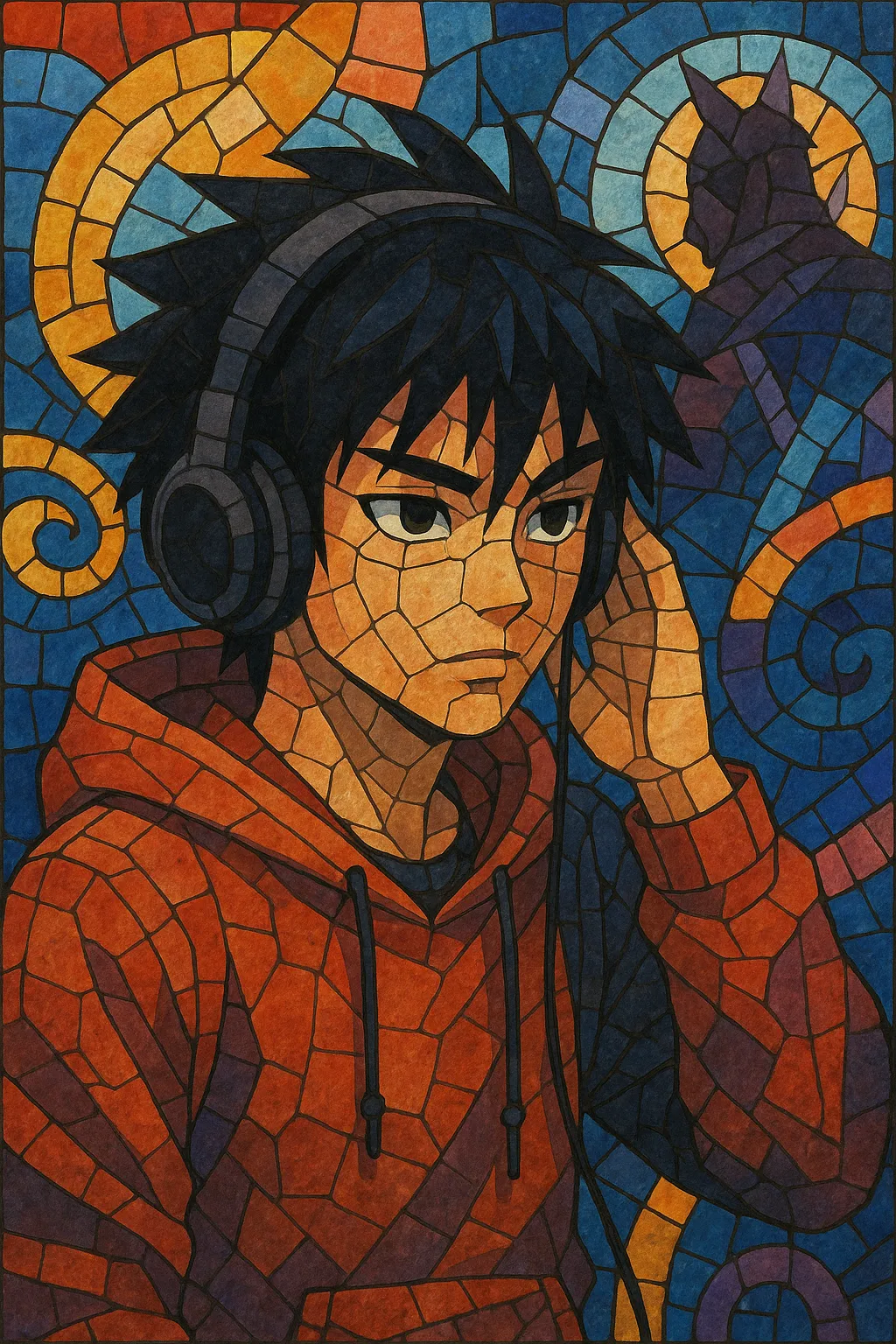Anime rap is a hip hop microgenre that fuses contemporary rap flows and production with lyrical themes, imagery, and aesthetics drawn from Japanese anime and manga.
Typical tracks reference specific characters, arcs, and tropes—especially from shōnen series—while using modern trap or boom-bap frameworks, energetic hooks, and cinematic, "anime opening"-style melodies. Producers often incorporate timbres reminiscent of anime soundtracks and J-pop, such as bright synth leads, string swells, choir stabs, and occasional quotations or re-compositions of anime motifs.
The scene grew natively on YouTube and streaming platforms through cyphers, character-themed singles, and AMV-style visuals, creating a global, internet-first community that overlaps with nerdcore but focuses specifically on anime narratives and fandom.
Nerdcore and internet-born hip hop in the 2000s laid the groundwork for rap that embraced fan culture. While anime references appeared sporadically in Western rap and in Japanese anison (anime songs) that included rap passages, the idea of consistently centering entire rap tracks on anime characters and storylines was still taking shape. A notable precursor outside the English-speaking world was Spain’s Porta, whose viral “Dragon Ball Rap” (2008) showed the mass appeal of anime-themed bars.
With the rise of YouTube, SoundCloud, and AMV culture in the 2010s, creators began releasing regular, high-production singles and cyphers focused on popular series like Naruto, Dragon Ball, My Hero Academia, One Piece, and Attack on Titan. This period solidified the sound: trap-driven drums, heavy 808s, double-time flows, and hooks styled after anime openings, paired with lore-heavy verses. Community-driven features and weekly release schedules helped the genre coalesce, with channels amassing large, dedicated audiences.
In the 2020s, anime rap broadened internationally and improved in production quality. Artists adopted more diverse sub-rap palettes (emo rap, drill, melodic trap), expanded into multilingual releases, and collaborated frequently across borders. Streaming platforms, conventions, and social media pushed the style into a sustainable niche where singles, cyphers, and theme packs (e.g., entire arcs or teams) became standard. While still internet-native, the genre increasingly interacts with the broader hip hop ecosystem and the official anison world through shared audiences and aesthetics.
Start by choosing a specific character, rivalry, or arc, and write from a clear point of view (first-person as the character or third-person narrator). Embed signature references (moves, quotes, items) and thematic motifs (resolve, training, found family) so fans recognize the lore immediately. Use dense multisyllabic rhyme, internal rhyme, and punchlines that twist canon details into wordplay.
Common tempos are 70–90 BPM (or 140–180 BPM in double time). For trap-flavored tracks, program crisp hi-hat rolls (1/16 to 1/32 with occasional stutters), snappy claps/snares on 2 and 4, and tuned 808s with slides for impact hits. For boom-bap variants, swing the drums, layer a tighter kick, and keep the hat pattern more restrained.
Write in minor keys for intensity, but borrow J-pop/anison traits: soaring, anthem-ready choruses; bright synth leads; string or choir lifts into hooks; and occasional key or mode shifts for drama. To evoke an anime feel without sampling, re-compose motifs using Japanese-leaning colors (e.g., pentatonic yo or in-style flavors, or Hirajōshi-inspired lines). Layer pads, bells, and short plucks; sidechain the bass for openness during hooks.
If you reference anime OSTs, re-record or re-harmonize motifs to avoid direct sampling issues. Alternatively, design new melodies that suggest the vibe of a series through instrumentation and intervals rather than literal quotes.
Use dynamic, character-specific deliveries (calm strategist vs. raging brawler). Build songs around a memorable hook (often the character’s core creed in one line). In cyphers, assign each rapper a character and keep 12–16 bar segments tight. Add ad-libs that echo signature attacks or callouts fans shout at shows.
Push the lead vocal forward with clear de-essing and fast compression. Carve space for 808s with low-end EQ and saturation; brighten hooks with parallel compression and subtle stereo widening. Pair releases with anime-styled visuals or AMV edits timed to drops for maximum impact on video platforms.


